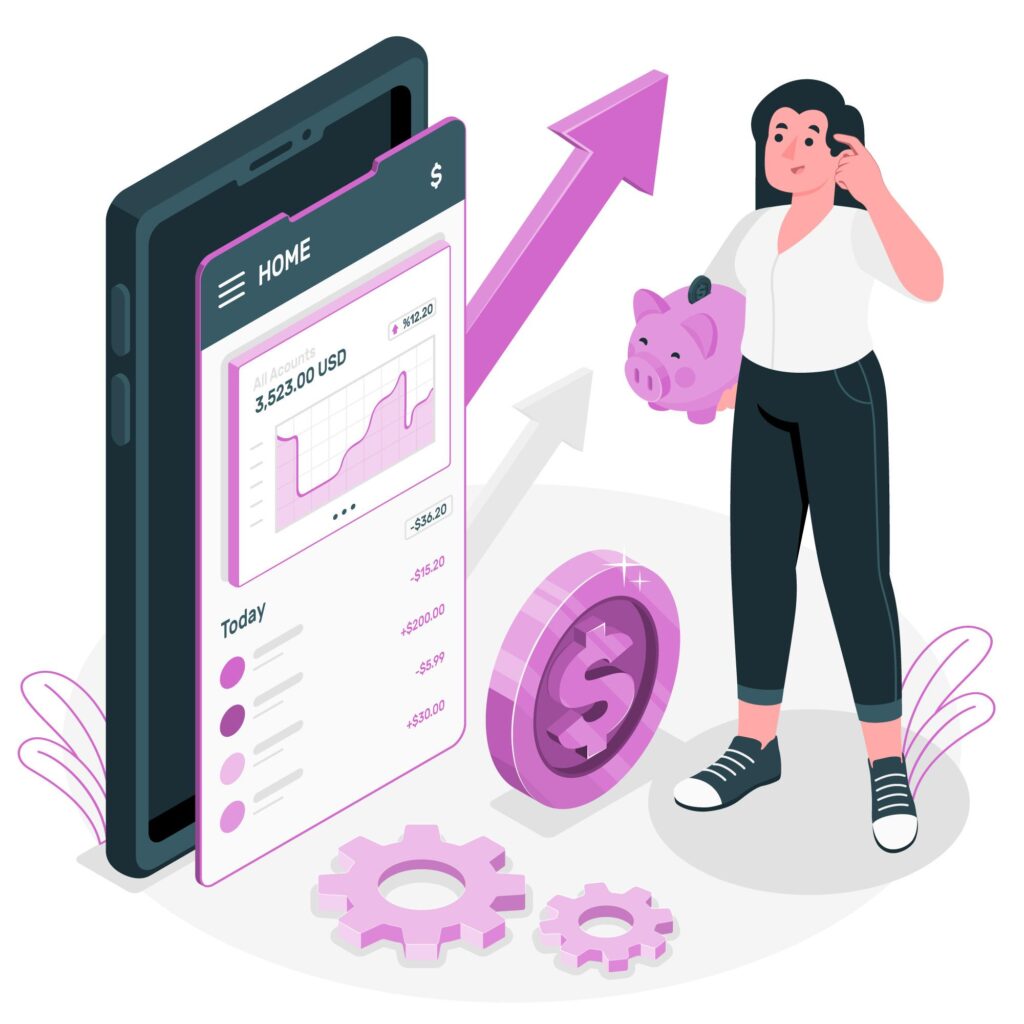Trading Software Development in 2025: Trends, Technology & How to Build a Winning Stock Trading App
Stock Market is no longer the passion and interest of full time traders or businessmen. Now, it’s the hot trend among all, be it college students, working women, housewives, corporate workers, or the other professionals.
What changed?
Is it the series of stock market crashes like the Wall Street crash (1929), Black Monday (1987), the great recession (2008) that made the stock market famous enough to raise interest, or it’s the penetration of trading as a handy on the go mobile app activity, that made the art of buy and sell be feasible to one and all.
Considering rising interests of the recent generations, I would like to think of digitalisation as one of the greatest factors affecting the spike in trading and opening of Demat Accounts.
Highest-ever 192.4 mn demat accounts opened in FY25, brokerages add 41.1 mn.

Now you could be handling portfolios, trading stocks in all indexes, checking live news updates and taking up licensed advisory, all using a mobile phone. Real time updates have made sure the traders match the speed of the stocks!
If you have been long standing in this business, you have been witness to the makeover of stock market trading, from papers and telephones to mobile phones and real time updates.
Now, let’s start with the trends around trading software development, as well as phase wise development of one!
AI & Predictive Analytics in Stock Trading App
Artificial Intelligence is revolutionizing how users interact with trading platforms. By processing massive volumes of market data in real time, AI models can identify trends, forecast price movements, and evaluate risk exposure with far more accuracy than traditional tools.
Real-World Use Cases:
- AI-based robo-advisors recommend personalized investment strategies based on user goals and risk appetite.
- Machine learning alert systems monitor technical indicators and trigger alerts for buy/sell opportunities.
- Sentiment analysis models evaluate news and social media to gauge market mood.
AI gives users faster, data-driven decisions—turning raw market data into actionable insights.
To understand the impact of Custom Trading Software on your business, read this blog here.
Auto-Trading & Algorithmic Bots
In 2023, 60–70% of equity trades in the U.S. were executed using algorithms (source: Nasdaq). Algorithmic and auto-trading is no longer limited to institutions—modern trading software empowers retail users with automated strategies.
Key Capabilities:
- Plug-and-play strategy builders: Pre-built bots that follow basic indicators like RSI, MACD, Bollinger Bands
- Backtesting engines: Test strategies on historical data to assess performance before going live
- Bot marketplaces: Users can buy/sell proven trading algorithms, often with copy-trading features
Automation reduces emotional bias and lets traders act 24/7 without human intervention.

Can’t wait to share your idea around trading app like no other?
API-First Architecture
Modern trading apps are built around APIs—they enable rapid data flow, external integrations, and feature scalability. Whether you’re placing trades, validating KYC, or pulling price charts, APIs are the backbone.
Essential APIs for Trading Platforms:
| Type | Examples | Use Case |
| Market Data APIs | Alpha Vantage, Polygon, Kite Connect | Fetch real-time price & volume data |
| Trading Order APIs | Alpaca, Interactive Brokers | Execute buy/sell orders programmatically |
| KYC/AML Verification APIs | Signzy, Digio | Ensure compliance during user onboarding |
| News & Sentiment APIs | FinSentS, Google Finance RSS | Enrich dashboards with live market insights |
APIs make your app modular, flexible, and faster to update as markets evolve.
From Idea to Execution: How to Develop a Trading App (Step-by-Step)
Phase 1: Planning & Product Design
- Define app type (Trading vs Broking App)
- Target user personas (retail investor, broker, sub-broker)
- Choose a feature set: real-time quotes, charts, AI insights, advisory, etc.
Phase 2: UI/UX & Wireframing
- Prioritize intuitive navigation
- Dark mode, minimal clutter
- Real-time charts using libraries like Highcharts or TradingView
Check out our dedicated blog on best Ui/Ux practices for Fintech app development.
Phase 3: Core Development (Frontend + Backend)

| Component | Tech/Tools |
| Frontend | Flutter, React Native, Swift (iOS), Kotlin (Android) |
| Backend | Node.js, Python, Java |
| Database | PostgreSQL, MongoDB |
| Cloud | AWS, Azure |
| APIs | Kite Connect, Alpaca, IEX Cloud, Firebase, Paytm KYC |
Phase 4: Compliance & Security
- End-to-end encryption
- 2FA & biometric logins
- Data masking & secure backups
- SEBI & RBI-compliant data handling for Indian markets
Phase 5: Testing, Launch & Iteration
- Functional, Load & Security Testing
- Beta rollout with selected traders
- Monthly updates based on usage data and feedback
If you have any requirements or ideas around building your own trading software, don’t look any further. We take pride in having 6+ years of experience in building scalable and secure Fintech apps and softwares.